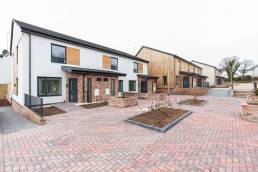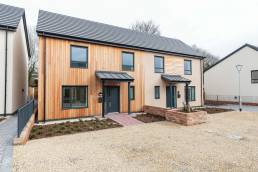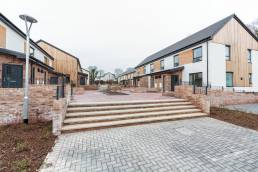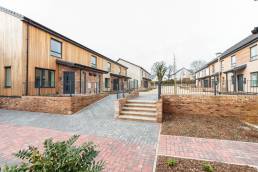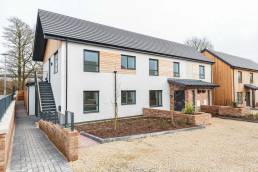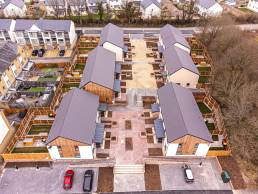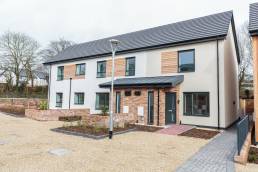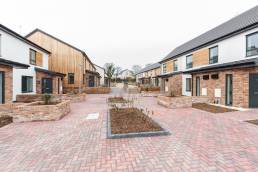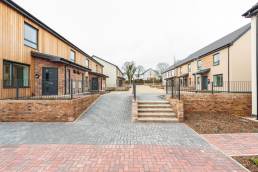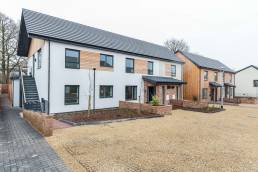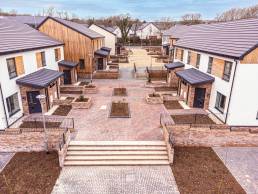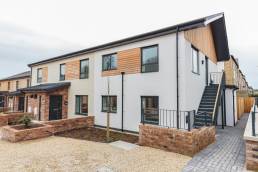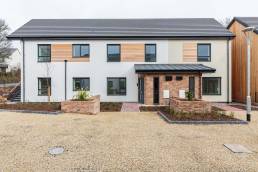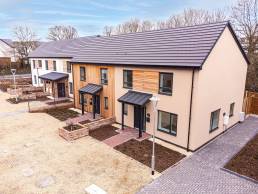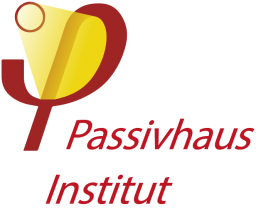
Passivhaus
You may be familiar with our expertise in delivering affordable homes to meet the Passivhaus Standard – we are a reputable Passivhaus competent contractor and have been invited to speak at several events so that others can learn from our experience.
Our knowledge and experience of delivering homes to Passivhaus Standard has enabled us to work with our RP Clients to offer up Passivhaus building Principles to enable the delivery of viable low energy (non-gas) affordable homes – being;
- Fundamental aspects for achieving Passivhaus, including insulation, high-performance glazing, airtightness and thermal bridging
- Energy standards, air source heat pumps and mechanical ventilation with heat recovery
- Ensuring attention to detail / quality is delivered on site
The fundamental Passivhaus Principles that need to be adhered to are set out below;
- Protected air tight barrier (taping of every joint and connection)
- Junction details – to eliminate thermal bridges
- Insulation – 300mm thick to walls
- Triple glazing windows and doors (argon fill and insulated frames)
- Window sizes and orientations
- ASHP and Mechanical Ventilation with Heat Recovery
- Certification from the Passivhaus Institute
Whilst all these principles “work together” the taped protected air tight barriers and the elimination of thermal bridging are the two absolute Passivhaus principles and the exacting attention to detail (and regular testing) required to achieve these fundamentals.
Four members of the team have the Passivhaus Contractor Qualification and two Site Managers have the Passivhaus Tradesperson Qualification.
If you are thinking about building a housing development to Passivhaus Standard, or what like to know more about the Passivhaus Principles, please contact Philip on 01253 696 800.
The heat losses of the building are reduced so much that it hardly needs any heating at all. Passive heat sources like the sun, human occupants, household appliances and the heat from the extract air cover a large part of the heating demand. The remaining heat can be provided by the supply air if the maximum heating load is less than 10W per square metre of living space. If such supply-air heating suffices as the only heat source, we call the building a Passivhaus.
Prof. Dr Wolfgang Feist Director of the Passive House Institute, Darmstadt, Germany
Lune Walk, Halton
At Lune Walk in Halton we have recently completed the construction of 20 new-build affordable homes to The Passivhaus Standard for our client Southlakes Housing Association.

